


 
Starting items

Core items
Boots


Summoner Spells


|
__
|
+
|
__
|

|
Runes & Masteries


5x

+4x

5x

+4xgreater glyph of mana regenration
AND

Click to Enlarge
 explanations
The first rune set is the preferred rune loadout. It is also rather precise. The reason for taking 5 flat health seals, 4 scaling health seals, and
 Veteran's Scars Veteran's Scars
is because this exact loadout will allow you to have 2751 HP at level 12, barely giving you enough health to have the  Warmog's Armor Warmog's Armor %Max HP Regeneration going if you buy:  Ionian Boots of Lucidity Ionian Boots of Lucidity,  Nomad's Medallion Nomad's Medallion,  Ruby Sightstone Ruby Sightstone, and  Warmog's Armor Warmog's Armor. While this build path is 1100 more gold than a more 'traditional' build path of  Ionian Boots of Lucidity Ionian Boots of Lucidity, eye of the equinox,
and  Ardent Censer Ardent Censer, I find that its power spike is much greater as a soraka with the warmogs passive going will effectively act as an infinitely replenishing fountain, if given enough time to heal up her teammates. Additionally, it offers greater survivability for a frequently focused support without the expense of the CDR (  Kindlegem Kindlegem still gives you the 10% CDR).
|
|

Hello, I am  Utopus, and I am a diamond rated support/mid laner on the north america server. I have been playing support frequently, ever since I started playing league back in 2011. Though things have undoubtedly changed since then, I do like to say that I am very comfortable in the role. Utopus, and I am a diamond rated support/mid laner on the north america server. I have been playing support frequently, ever since I started playing league back in 2011. Though things have undoubtedly changed since then, I do like to say that I am very comfortable in the role.
As you can see from the picture below, I do play quite a bit of  Soraka, and I consider myself quite knowledgeable when it comes to playing her.
I hope you get something out of this guide. If you have additional comments, criticism, or questions, feel free to comment on this guide, or shoot me an email at mk.harris8@gmail.com. I will also be accepting screenshots of your successful games. Depending on how many screenshots I get from you guys, I may compile them and add them to an imgur album at the bottom of the guide. Soraka, and I consider myself quite knowledgeable when it comes to playing her.
I hope you get something out of this guide. If you have additional comments, criticism, or questions, feel free to comment on this guide, or shoot me an email at mk.harris8@gmail.com. I will also be accepting screenshots of your successful games. Depending on how many screenshots I get from you guys, I may compile them and add them to an imgur album at the bottom of the guide.

 Soraka is a low risk, medium-high reward champion, who is adept at laning. While her damage is lackluster, the amount of survivability she grants her team through raw healing power is threatening enough that she is often times focused down before important carries are. Her ultimate, Soraka is a low risk, medium-high reward champion, who is adept at laning. While her damage is lackluster, the amount of survivability she grants her team through raw healing power is threatening enough that she is often times focused down before important carries are. Her ultimate,  Wish makes Wish makes  Soraka a menace to all her opponents. It gives her global map presence, and allows her to turn around a lost fight into a victorious one for her teammates. Her Soraka a menace to all her opponents. It gives her global map presence, and allows her to turn around a lost fight into a victorious one for her teammates. Her  Equinox allows her to shut down many champions from bursting down her allies, making her a strong counterpick to many assassins. Equinox allows her to shut down many champions from bursting down her allies, making her a strong counterpick to many assassins.


|


|
|
|
(Innate) A moderately weak passive, intended to give  Soraka the ability to rescue her teammates and come to their aid. It gives a massive movespeed buff when walking towards low health allies. Soraka the ability to rescue her teammates and come to their aid. It gives a massive movespeed buff when walking towards low health allies. |
|

|
|
|
|
(Active) This is  Soraka's primary self-healing spell and escape spell. Upon damaging a champion, Soraka's primary self-healing spell and escape spell. Upon damaging a champion,  Soraka is healed over time, and gains movement speed when running away from champions. Landing this spell in lane will give you a large boost in health and will allow you to heal your lane partner for more without the risk of putting yourself in critical health percentages. Soraka is healed over time, and gains movement speed when running away from champions. Landing this spell in lane will give you a large boost in health and will allow you to heal your lane partner for more without the risk of putting yourself in critical health percentages. |
|

|

|
|
|
(Active) Your bread and butter. The sheer healing that can put out from this spell makes you a threat that your opponents cannot ignore. With cooldown reduction, the cooldown on this spell can get as low as 1.1 seconds.  Soraka's healing can compete with the damage of medium damage champions like Soraka's healing can compete with the damage of medium damage champions like  Renekton and Renekton and  Irelia. Irelia.
In the early game, the low health cost can be used to its fullest when your ADC is constantly trading autos with the opponent ADC. Simply put, you can whittle your opponents out of lane. In fact, during the early game (and most other stages of the game), this spell is so powerful that it's usually more important that your carries take damage than you do. |
|

|

|
|
|
(Active) A instant-speed, AoE silence/snare that often negates a lot of playmaking your opponents can do. Its usage will vary greatly from game to game. Against cooldown reliant champions - champions that are dependent on dealing a bulk of their damage in a small period of time, it is best to save  Equinox for when they go in. Some examples of cooldown reliant champions are Equinox for when they go in. Some examples of cooldown reliant champions are  Riven, Riven,  Katarina, Katarina,  Zed, and Zed, and  Ryze. Ryze.
 Equinox can also be used as follow-up to hard CC for its snare. It can also be used to zone opponents in narrow areas. Equinox can also be used as follow-up to hard CC for its snare. It can also be used to zone opponents in narrow areas.
When placing  Equinox, it's important to place the center of the field slightly in front of where your opponent wants to go. Equinox, it's important to place the center of the field slightly in front of where your opponent wants to go. |
|

|
|
|
|
(Active) A global ult that can be used to turn around fights anywhere on the map. While personally, I only use  Wish when I see that it can be used to change a 1 for 0 for my oppponent to a 1 for 0 for my team, it can sometimes be useful to just use Wish when I see that it can be used to change a 1 for 0 for my oppponent to a 1 for 0 for my team, it can sometimes be useful to just use  Wish to save an ally from dying to something like Wish to save an ally from dying to something like  Ignite. Ignite. |
|

|




You want to level up
 Wish
Wish whenever possible to maximize the amount of team healing, and also lower its cooldown.
 Astral Infusion
Astral Infusion is levelled up next to reduce the cooldown on the heal, and maximize the amount healed.
 Starcall
Starcall is levelled next to increase the duration of the heal over time and the slow duration.
 Equinox
Equinox has been levelled last.
Some points early on may be put into
 Starcall
Starcall over
 Astral Infusion
Astral Infusion if your opponent's lane has high poke.



|
|


boots of lucidity


|
|
Core Items
Season 6 brought some controversial changes to warding. While rushing  Sightstone is still the safest option, it isn't necessarily always needed. If you recall with less than the 800 gold required for sightstone, or don't urgently need extra vision, (e.g. you and your carry are constantly being pushed under your turret), it may be wise to consider rushing Sightstone is still the safest option, it isn't necessarily always needed. If you recall with less than the 800 gold required for sightstone, or don't urgently need extra vision, (e.g. you and your carry are constantly being pushed under your turret), it may be wise to consider rushing  Nomad's Medallion for extra gold income before switching to Nomad's Medallion for extra gold income before switching to  Sightstone. Viable sightstone upgrades include Sightstone. Viable sightstone upgrades include  Ruby Sightstone and eye of the oasis. Nowadays, I prefer upgrading to Ruby Sightstone and eye of the oasis. Nowadays, I prefer upgrading to  Ruby Sightstone because i have a heavily specialized rune page that allows for a Ruby Sightstone because i have a heavily specialized rune page that allows for a  Warmog's Armor rush and a massive level 12 power spike. If you need your powerspike slightly sooner, rushing eye of the oasis into Warmog's Armor rush and a massive level 12 power spike. If you need your powerspike slightly sooner, rushing eye of the oasis into  Ardent Censer is probably slightly safer. Ardent Censer is probably slightly safer.
Due to the reduced duration of  Stealth Ward wards, I find that it is safest to keep that trinket until at least level 4, unless you know that it's critical to have the vision denial so that your jungler can sneak in a gank, or a dragon. If it's not obvious already, you should look to upgrade your Stealth Ward wards, I find that it is safest to keep that trinket until at least level 4, unless you know that it's critical to have the vision denial so that your jungler can sneak in a gank, or a dragon. If it's not obvious already, you should look to upgrade your  Sweeping Lens around level 5 or 6. This is to deny your opponents vision, but also it allows you to upgrade to Sweeping Lens around level 5 or 6. This is to deny your opponents vision, but also it allows you to upgrade to  Oracle Lens as soon as you hit level 9 so you don't have to wait 2 minutes to make use of its powerful vision denial. Your ability to catch your opponents is a function of your vision control, and of your judgment with regards to how to react with knowledge of your opponent's position. Oracle Lens as soon as you hit level 9 so you don't have to wait 2 minutes to make use of its powerful vision denial. Your ability to catch your opponents is a function of your vision control, and of your judgment with regards to how to react with knowledge of your opponent's position.
Try to always have 1  Vision Ward on the map at all times. Because supports are limited to a cap of 3 wards at one time, having this extra ward that doesn't expire makes it much easier for you to keep vision on critical areas. Vision Ward on the map at all times. Because supports are limited to a cap of 3 wards at one time, having this extra ward that doesn't expire makes it much easier for you to keep vision on critical areas.
 Refillable Potion isn't always necessary, but I personally like purchasing it during the mid game. Some supports like Refillable Potion isn't always necessary, but I personally like purchasing it during the mid game. Some supports like  Nami don't really use Nami don't really use  Refillable Potion well. Refillable Potion well.  Soraka isn't one of those people; It turns out that Soraka isn't one of those people; It turns out that  Soraka uses Soraka uses  Refillable Potion excellently and the extra regeneration that this inexpensive item gives allows you to pump out several more heals in the middle of a team fight before running into critical health problems. Refillable Potion excellently and the extra regeneration that this inexpensive item gives allows you to pump out several more heals in the middle of a team fight before running into critical health problems.
|

|
|





|
|
Utility / Defensive Items
The following items are the standard support items that you'll likely be seeing built most games with Soraka. These items tend to give defensive stats, and have a nice active ability.
 Ardent Censer is a very strong pick at the moment. Most Ardent Censer is a very strong pick at the moment. Most  Soraka mains rush this as their first purchase following their sightstone upgrade. If you do not have the runes to accomodate the rune page I listed in my cheatsheet, I would recommend rushing this as a first purchase. The lifesteal this gives really helps your ADC spike in team fights slightly earlier. Soraka mains rush this as their first purchase following their sightstone upgrade. If you do not have the runes to accomodate the rune page I listed in my cheatsheet, I would recommend rushing this as a first purchase. The lifesteal this gives really helps your ADC spike in team fights slightly earlier.
 Warmog's Armor gives Warmog's Armor gives  Soraka a lot of health and gives her a strong out of combat health regeneration, and is now the item I rush as my first major item purchase. With my runes, masteries, and itemization ( Soraka a lot of health and gives her a strong out of combat health regeneration, and is now the item I rush as my first major item purchase. With my runes, masteries, and itemization ( Ionian Boots of Lucidity -> Ionian Boots of Lucidity ->  Ruby Sightstone -> Ruby Sightstone ->  Warmog's Armor), it's possible to have 2751 HP by level 12, and benefit from warmog's massive out of combat health regeneration. Warmog's Armor), it's possible to have 2751 HP by level 12, and benefit from warmog's massive out of combat health regeneration.
 Locket of the Iron Solari is an incredible item on Locket of the Iron Solari is an incredible item on  Soraka. I buy this item every game, but I usually buy it as a 4th or 5th item. The active on Soraka. I buy this item every game, but I usually buy it as a 4th or 5th item. The active on  Locket of the Iron Solari acts as a second Locket of the Iron Solari acts as a second  Wish, in a way. Wish, in a way.
 Redemption is another staple in my build. With its active, you can heal both yourself and some of your teammates for a large swath of health. I tend to purchase this item after Redemption is another staple in my build. With its active, you can heal both yourself and some of your teammates for a large swath of health. I tend to purchase this item after  Locket of the Iron Solari, because it has a long delay on its healing. Locket of the Iron Solari, because it has a long delay on its healing.
 Zeke's Convergence is item that increases your carries' damage after you cast Zeke's Convergence is item that increases your carries' damage after you cast  Wish, in addition to adding an additional slow to your kit through its passive. While I personally dislike the item, it would be inappropriate for me to not put it on the list of possible items. Wish, in addition to adding an additional slow to your kit through its passive. While I personally dislike the item, it would be inappropriate for me to not put it on the list of possible items.
 Mikael's Blessing is an item that allows you to cleanse a debuff from an ally, and massively increases the overall power of your healing. This is a valuable purchase if you need to cleanse an important CC-effect such as a Mikael's Blessing is an item that allows you to cleanse a debuff from an ally, and massively increases the overall power of your healing. This is a valuable purchase if you need to cleanse an important CC-effect such as a  Dark Binding, or an Dark Binding, or an  Enchanted Crystal Arrow from a high priority teammate. Enchanted Crystal Arrow from a high priority teammate.
|

Level 1
 Soraka
Soraka has a vulnerable level 1. While her
 Astral Infusion
Astral Infusion allows her and her carry to very soundly win trades,
 Soraka
Soraka and her team are often susceptible to invades and early skirmishes, since
 Astral Infusion
Astral Infusion doesn't help win pre-minion spawn team fights as decisively as the pick potential from something like a
 Rocket Grab
Rocket Grab,
 Death Sentence
Death Sentence, or
 Dark Binding
Dark Binding.
Because your solo laners tend to have power spikes very early in the game, junglers prefer to start on the jungle camp closest to their duo lane, so they can clear their buffs, and then quickly transition to gank a solo lane. This means that it is important for you to place defensive wards to detect for any early jungle invades and react accordingly. Once your jungler's monster spawns at 1:40, help him leash by throwing down a
 Starcall
Starcall and a couple autoattacks. If you jungler starts top side, cast a
 Starcall
Starcall or two and wait until the ~1:50 mark to show in lane. You'll make your opponents believe that your jungler started bot side, which will make ganks for your jungler easier when he ganks from the bot side of the map when he hits level 3.
Below are some common places for me to ward depending on the side i'm on. While you don't always have to ward in the spots highlighted below, they should be able to cover most of the entrances to your jungle.
For Blue Side:
 |
For Red Side:

|
Once you get to lane, you should be trying your hardest to hit level 2 before your opponent. When playing more CC-heavy supports like
 Leona
Leona and
 Thresh
Thresh, I would often secure first blood from this level 2 cheese when I was in gold and low platinum. The extra spell, damage, and defenses granted from that level can easily convert itself into a kill.
Because of this, getting level 2 as quickly as possible is of utmost importance.
 Soraka
Soraka doesn't have a particularly strong level 2 power spike, so that extra level is mainly there to boost your defenses. Pushing and beating your opponents to level 2 can make it safer for you in lane, especially since it's so early in the game that junglers are usually busy clearing their first buffs and cannot punish your aggressive play. It takes the first whole minion wave and 3 melee minions to hit level 2, so for those first two waves, if I'm not repositioning myself to avoid poke, I'm always autoattacking high health minions. In certain lanes, the level 2 rush can be so critical for your safety that as much as 2 CS can be given up for this safety.
Level 2-5
In the early game, you are looking to make advantageous trades for you & your carry. Generally, the way to play lane correctly with a
 Soraka
Soraka is that your ADC should be looking to constantly be in combat with your opponent lane, yet never committing to your opponents all-in unless there already exists a large health differential between the ADC and the opponent lane. You'll find that doing this will force your opponents out of lane to the point where you can deny them CS and experience by forcing early / undesirable recalls.
Also, you'll find that in general, you'll win a trade if your ADC takes the damage in the trade, and you'll lose the trade if you end up getting focused. While there are things that can swing trades more or less in your favor (e.g. large minion waves), i've included a general check-list below to help you gauge the quality of trading done in your lane.
Here's an example of a common mistake that a lot of
 Soraka
Soraka players make.

In the picture above, I try to position myself in such a way that the caster minions would block any hooks that
 Blitzcrank
Blitzcrank shoots. The instant
 Blitzcrank
Blitzcrank walked past our first caster minion, I should have ran back to tower so the incoming new minion wave would block hooks for me and keep me safe. However, I instead tried to stay behind
 Miss Fortune
Miss Fortune. She, wanting to dodge
 Blitzcrank
Blitzcrank hooks, tried to position funny by moving such that a caster minion was always between her and
 Blitzcrank
Blitzcrank. Because I didn't run back to tower,
 Miss Fortune
Miss Fortune felt forced to stay in lane, at which point
 Blitzcrank
Blitzcrank could just
 Power Fist
Power Fist +
 Rocket Grab
Rocket Grab me at point blank range and kill me.
In the GIF, I was positioned well enough so that I was never in any risk of being harassed by
 Ezreal
Ezreal, but both
 Miss Fortune
Miss Fortune and I failed in that she didn't punish
 Blitzcrank
Blitzcrank for walking past his minion line, and I failed in that I didn't play safer and reduce the chances that i'd be picked off by a hook.
Level 6
You hit a power spike once you hit level 6. While champions like
 Thresh
Thresh or
 Morgana
Morgana hit combat power spikes with
 The Box
The Box and
 Soul Shackles
Soul Shackles respectively,
 Soraka
Soraka's power spike is a utility power spike, since
 Wish
Wish allows you to turn around fights in other lanes.
While
 Wish
Wish can be used for clutch heals in an all-in situation in bot lane, ideally, the spell should be saved for emergencies in other lanes. I think that
 Wish
Wish is used best when you can change around a fight where your opponent will kill you ally to a fight where your ally kills your opponent. Ultimately, you need to assess each critical situation and see if it's worth the long cooldown of
 Wish
Wish to save that teammate. Evaluate the speed of the game - if tons of plays are happening around the map, it may be better to let an ally that got caught out die to an ignite so that you can instead use your
 Wish
Wish in a clutch team fight at some later point in time. Alternatively, if the game is largely a standstill, it may definitely be worth it to just save an ally with
 Wish
Wish.
The Rules of Trading
I've compiled a list of rules that I've learned to follow over my ranked climb last season. Most of these should be obvious, but hopefully some of these may be of use to you.
- If a trade isn't going well for you, try to disengage as quickly as possible
- If a trade is going well for you, try and push the envelope as much as possible, while maintaining fluidity between you and your ADC. If your ADC is backing off from a trade, you back off with him. If your ADC is chasing your opponents, you chase with him. You want to keep a steady buffer distance between you and your ADC.
- Always try to pop a potion at the start of an extended trade, or if you are below 60% health. This can make a life or death difference in all-in exchanges.
- Never, EVER take free damage. If you're taking too much free damage, learn to stand farther back or position yourself in such a way that your opponent can be easily punished by your ADC if he tries to poke you. A good
 Soraka player will never give her opponents the chance to get damage down on her.
Soraka player will never give her opponents the chance to get damage down on her.
- Pay attention to the health of your own minions. You can learn a lot about your opponents by their behavior around low health minions - both yours, and theirs. If your opponents play defensively (such that they position to not take poke) when you have low health minions, and they play aggressively when there are no low health minions to last hit, then you can use that to your advantage to set up ganks with your jungler. Additionally, a change in this kind of behavior indicates that something is abnormal - your opponents might be preparing for their jungler to gank you, or perhaps they think that your jungler is nearby. These kinds of details are paramount to communicate with your team.
- It is important for you to keep track of your opponent's cooldowns. If a
 Blitzcrank early on misses his
Blitzcrank early on misses his  Rocket Grab, you know that you have a 0% chance of getting hooked for the next 13-15 seconds. Punish him by trying to trade during this time, disengaging well before his
Rocket Grab, you know that you have a 0% chance of getting hooked for the next 13-15 seconds. Punish him by trying to trade during this time, disengaging well before his  Rocket Grab comes off cooldown.
Rocket Grab comes off cooldown.
- In fights to the death, I try to gauge the amount of damage my opponents do. If my opponent lane has a very low damage team, like
 Sivir +
Sivir +  Alistar, then it can be worth it to just stand behind your ADC and heal for him. If your opponents have a high damage lane like
Alistar, then it can be worth it to just stand behind your ADC and heal for him. If your opponents have a high damage lane like  Lucian +
Lucian +  Thresh, you won't be able to keep sustaining the amount of damage that that lane can put out, so it may be worth it to try to run closer to your ADC in an attempt to juggle aggro from your opponents. While you'd be getting focused, the extra couple of free auto attacks that your carry can put out may be enough for him to win the all-in.
Thresh, you won't be able to keep sustaining the amount of damage that that lane can put out, so it may be worth it to try to run closer to your ADC in an attempt to juggle aggro from your opponents. While you'd be getting focused, the extra couple of free auto attacks that your carry can put out may be enough for him to win the all-in.
 Starcall is most effectively used when
Starcall is most effectively used when
1. Your opponents are clumped up in a trade
2. You have more than 30% mana, and you need to regenerate some health.
3. You have a strong minion wave in front of you to block the bulk of skillshots your opponents will throw at you.
4. Your jungler is looking to tower dive and you want to take the first part of the tower aggro
5. You want to check brushed area for champions

You'll only have your
 Stealth Ward
Stealth Ward for your early levels, so don't see too many spots for those. You have to choose between having river vision or lane vision early on. Placing your
 Stealth Ward
Stealth Ward ward in river will allow your lane to have increased safety from jungle ganks, while conceding brush control. If you find your lane is pushing hard, it'd do you good to ward this as a safety measure.
If you place your
 Stealth Ward
Stealth Ward ward in lane, you'll have more vision control over your opponents far brush. This can be critical in dodging skillshots like
 Death Sentence
Death Sentence and
 Rocket Grab
Rocket Grab.
The exact placements of your
 Vision Ward
Vision Wards depends on your current success in the game. If you are slightly behind/even, it might do you good to make the most out of your
 Vision Ward
Vision Wards by placing them in the tri brush near your lane, or to place them in the brush behind your jungler's red buff - places that are really safe for you to ward, and really difficult for your opponents to clear. In contrast, if you are ahead in your lane, it may do you good to place your
 Vision Ward
Vision Wards in more aggressive places, like the death brush in the bottom side of the river, or near the dragon pit. While these are easier for your opponents to clear these wards, placing your pinks in river will allow you to control vision near the dragon area much more effectively; You can use this vision control to catch an opponent, or force a dragon fight that may end up in your favor.
 |
|
Mid/late Game, Blue side warding map
When tied, or slightly ahead
o - Possible  Sightstone warding locations Sightstone warding locations
o - Possible  Vision Ward locations Vision Ward locations |
 |
|
Mid/late Game, Blue side warding map
When VERY ahead
o - Possible  Sightstone warding locations Sightstone warding locations
o - Possible  Vision Ward locations Vision Ward locations |
When you're tied, or very ahead, your goal is try and get as much information of your opponent's movements. More importantly, you want to get intel of your opponent's location NEAR AN ACTIVE OBJECTIVE. For example, if you JUST took dragon, then you probably don't need to have many wards near that area since there isn't much for your opponent to take near that area for another 5 minutes. You'd be better off rotating to the baron side of the map and deep warding there.
Consequently, if both baron and dragon are active objectives that can be taken, it might be good to have ward coverage of both areas. Keep in mind that Towers count as active objectives too. If you plan on taking a tower, it may do you good to ward areas around that tower so as to see how many opponents at a given time are close enough to that tower to defend it against an organized push.
As a general rule of thumb the deeper your ward coverage extends, the more information you can get on your opponent's location. However, it can be risky trying to place very deep
 Sightstone
Sightstone wards in your opponents jungle without teammates being nearby, or you already having vision of the area near the area you're trying to ward.
While it is important to have deep wards of your opponents jungle, you may need to place
tactical wards too. Tactical wards are wards that you use to cover blind spots in an area close to you, if you know a team fight is about to happen. For example, placing tactical wards is critical when you are playing against a team composition that can flank well, like
 Fiddlesticks
Fiddlesticks (with his
 Crowstorm
Crowstorm), or against high mobility assassins that are looking to pick off a carry, like
 LeBlanc
LeBlanc or
 Rengar
Rengar.
Mid/late game, Blue side warding map
When Behind
o - Possible  Sightstone warding locations Sightstone warding locations
o - Possible  Vision Ward locations Vision Ward locations |
|
 |
When you are behind, it is important for you to get as knowledge of your opponent's location, while also being sure not to get caught out. When you are behind, you are looking to try and ward your own jungle. It's important to try and stratify your warding, and ward areas where current objectives may be contested. For example, if you're at the 35:00 mark, and your opponents have a lead on you, but they are not sieging your inhibitor turrets, they will probably be looking to get baron to make their sieges easier. To get vision of baron, it's safest for you & an escort to first ward the two brushes near the wolves area, and then place a ward over the blue buff wall, into river.
Warding is a very complex subject, with intricacies that change from division to division.

 Soraka
Soraka's team fight presence is really strong, especially after she gets some cooldown reduction items. As my guide is titled, the purpose of
 Soraka
Soraka is to be a combat medic. You'll basically want to be healing the most desirable targets as fast as you can with
 Astral Infusion
Astral Infusion and
 Wish
Wish, helping your teammates kite with
 Starcall
Starcall's slow, and throwing a wrench in your opponents plans with a well timed
 Equinox
Equinox.
You want to be positioned as closely to your team as possible without being in real risk of getting jumped on and focused.
Notice how i'm positioned. My opponents would have to plow straight through
 Ezreal
Ezreal to get to me. While this is normally a fine thing to do (since
 Ezreal
Ezreal is squishy), this was an attempt at trapping out one of the opponents and killing them before they could get back to their turret. While I am a little exposed, my team is close enough to converge on my opponents quickly such that i'm not in any danger.
In this picture, my
 Trundle
Trundle is too far out of position. Although I want to, I cannot run back to heal him, lest I get
 Leap Strike
Leap Striked by
 Jax
Jax and die needlessly. At this point, it is best for me to continue running back, and saving my cooldowns for helping out
 Ezreal
Ezreal.
I'm positioned close enough to my teammates to be able to heal them while
 Astral Infusion
Astral Infusion is off cooldown, but i'm still positioned safely enough; Look at my opponents, and ask, "What could possibly get to me?" My opponent's ADC isn't going to be joining the fight for a little while, so my opponents likely don't have enough damage per second to take down both the
 Lee Sin
Lee Sin and the
 Vayne
Vayne with the combined defenses from
 Lux
Lux and me, since
 Morgana
Morgana's ultimate is down.
In addition to healing her allies,
 Soraka
Soraka adds additional utility to her team through her
 Equinox
Equinox.
 Equinox
Equinox can be used for either zone control, or for disruption. It largely depends on your opponents team composition, and the context of the team fight that determines which use of
 Equinox
Equinox is more desirable.
As you can see below, I used this
 Equinox
Equinox as a way to zone my opponents. My opponents team is getting flanked by
 Nasus
Nasus so they would like to push forward into my back line (
 Vayne
Vayne,
 Lux
Lux) so that the carries can be killed and the damage output of my team would be stifled, however my
 Equinox
Equinox forces my opponents to path awkwardly to avoid my snare, thus buying my teammates enough time to reposition.
Other times, you will need to save your
 Equinox
Equinox to disrupt your opponents. In this example below, my opponent
 Rammus
Rammus just
 Powerball
Powerballed into my
 Jinx
Jinx. I know that
puncturing taunt will soon follow, and if that happens, then my
 Jinx
Jinx will get chain CC'ed, focused, and killed. I use
 Equinox
Equinox immediately after
 Rammus
Rammus hits jinx with
 Powerball
Powerball so the
puncturing taunt won't immediately follow. Conveniently,
 Thresh
Thresh was also hit with the
 Equinox
Equinox, thereby buying jinx enough time to escape with her summoner spells.
A perhaps more obvious example of a distruption
 Equinox
Equinox is in the picture below.
 Zilean
Zilean mispositions and gives
 Katarina
Katarina the chance to quickly assassinate him and
 Shunpo
Shunpo out, towards the safety of her turret. However, I save my
 Equinox
Equinox for until she starts her channel of
 Death Lotus
Death Lotus so that I can interrupt it, preventing her from assassinating
 Zilean
Zilean. Champions that are heavily ability reliant like
 Zed
Zed,
 Katarina
Katarina, and
 Riven
Riven - to name a few, can really get messed up with a distruption
 Equinox
Equinox.

Supporting requires fewer mechanics than most other champions; This means that it is easier for you to be looking elsewhere on the map, and evaluating where plays can be made. Knowledge of objectives and creep wave manipulation make it quite easy to shot call for your team. Your ability to catch your opponents makes you have a terrifyingly large map presence. While mastering
 Soraka
Soraka's team fight mechanics is critical, the best way to carry as a support role is to have as much map presence as you can.
Here is a list of objectives that you can control to get an edge over your opponents, in order from most important to least important. The list isn't universally accurate, but it should give you a good idea of the relative value of each of these objectives.
- Nexus turrets
- Inhib tower + Inhibitor
- Baron
- Inhibitor Turret
- Exposed Inhibitor
- Vision Denial
- Vision
- Large Forward pushing minion wave
If you were to put me in a sandbox environment, where I could choose any objective and take it without negative repercussions, I would start at the top of this list - at nexus turrets, and then work my way down. Realistically, though, teams don't simply give away their nexus turrets. In fact, that might be the most difficult objective to get, in the same what that it'd be difficult to waltz over to baron and take it freely without first catching a carry and killing them. Because
 Soraka
Soraka is adept at facilitating sieges, and excels at assisting allies in team fights, this is the list of the reward you get from controlling an objective that you can
while weighing in risk.
- Vision
- Vision Denial
- Inhibitor
- Baron
- Inhibitor Turrets
- Nexus Turrets
- Large Slow Pushing Side minion wave*
- Tower
The list will vary a bit from team to team. For example, if your team composition is good at sieging turrets (e.g. they have poor wave clear, you have a
 Tristana
Tristana), taking an inhibitor turret may be easier and therefore less risky than a baron. Conversely, if your team composition prefers team fighting (e.g. your opponents can defend towers easily, you have a
 Vayne
Vayne), then tower sieging will be more risky than baron.
Try to get the most out of any advantage you get over your opponents. Utilize both vision and vision control to look for windows of opportunity in which you can gain an objective. Whenever you find yourself having a numbers advantage over your opponents, it does you good to use that to your advantage. For example, whenever you kill an opponent, you should always look at your minimap and try to force an objective. Additionally, if you find that a solo lane player has
 Teleport
Teleport ed to your lane, you should be advising the solo lane to either match his
 Teleport
Teleport, or push his minion wave into tower so as to both deny the opponent CS as well as grant your team gold as well as map pressure.
Wave control is heavily important in the laning phase, and a lot of players (certainly players below plat level play) don't fully understand what is going on.
During the early game, wave control can be used for various things, including setting up ganks, dives, preventing trades, forcing winning trades, rotations to dragon, and alleviating pressure from solo lanes by creating map pressure on the bottom side of the map. While it is critical to understand minion waves, it is difficult to cover all bases (or else someone would have done it already). Below, I've tried to teach you guys through example of some ways you can evaluate the state of your minion wave, and shotcall appropriately.
Freezing your minion wave
|
Advantages for Freezing:
- Safety from jungle ganks
- More control of minion wave
- If winning, you are able to zone opponents from CS
- If losing, you can farm more safely
- More opportunities for allied jungler ganks
|
Risks of freezing:
- More susceptible to tower dives depending on size of minion wave
- Vulnerable versus long range poke
- Vulnerable to lane ganks
- Penalty (in CS, experience) if you need to rotate to your bot side jungle, mid, or dragon.
|
How to freeze:If left entirely alone, a minion wave with the higher number of caster minions will tend to push forward. For example, if your minion wave has 3 caster & melee minions, and your opponent minion wave has 4 caster minions and 3 melee minions, the minion wave will almost certainly push towards your tower. The rate at which this minion wave will push to your tower depends on the rate at which your opponent ADC kills your caster minions compared to your own ADC. This means that if you want the wave to push into your tower, you or your ADC should be autoattacking caster minions less frequently than your opponents (assuming both laners deal approximately the same amount of damage); If you want your lane to stay neutral (e.g. your opponents can poke you easily under tower), you want to be autoattacking minions as frequently as your opponent; Lastly, if you want your lane to push to your opponents side (e.g. safety in trades, you want to set up a dive, you don't want your opponents to recall), then you want to be autoattacking the minions more frequently than your opponent. This also means that a carry with AoE damage like
 Jinx
Jinx can push her minion wave into your tower faster than say, a
 Vayne
Vayne could.
Another factor that is important for freezes is the timing of your minion wave/your opponent minion wave. Because freezes vary so much depending on the rate at which your opponent's lane can push, and when your minions get pushed with respect to your reinforcement minion wave, it's important to establish the bounds for the amount of time your minion wave can freeze.

Because the opponent minion wave was pushed into our turret by the time our melee minions reached our turret, our minions spent more time attacking the minions before continuing forward into lane, whereas the opponent's minion wave did not. This means that the wave would be frozen right outside of range of our tower. Moreover, the melee minions took some damage from the leftover opponent minion wave, which means that the wave will likely (80% chance) push into my turret again by itself. Based on the health of both minion waves and the items and levels
 Lucian
Lucian has in this example, starting when the minions in the first minion wave (in the GIF) die, the lower bound for the amount of time that my minion wave can stay alive before pushing into turret is about 12 seconds and the upper bound is around 25 seconds. This is the window of time where
 Lucian
Lucian wants to be in bot lane, autoattacking minions and getting gold, and also the window of time where it is easiest the jungler to gank the
 Lucian
Lucian.
When a wave is frozen, that means that it is easy for the jungler to gank the lane that is further pushed. However, most players misunderstand this to mean that once you have successfully frozen your lane, you should call your jungler over to gank; This is too late. What the more successful player does, is call his jungler over to gank right at the moment he knows that his minion wave will freeze. This wastes the least amount of time for your jungler because your opponent ADC will be kind of 'forced' to stay in lane to grab that CS, and also because it'll be super obvious if your opponents know your jungler is there.
Pushing your minion wave
How to push minion wave: Pushing your minion wave correctly is inherently harder to do than freezing a minion wave, because you have less control over your minion wave which makes it less predictable. Simply put, your opponent has more options: He can choose to keep the lane frozen in lane by matching your autoattacks on minions, or choose to not match your autoattacks on minions and instead freeze the lane closer to his tower, granting him safety from all-ins and jungler ganks.
The way to correctly break an oppponent's freeze is to kill your opponents minion wave, and push your wave into tower such that they die well before the next opponent minion wave appears.
Pop quiz!!!

Both
 Corki
Corki and
 Lucian
Lucian have farmed up and are looking to recall. There are many objectives to be taken like
 dragon
dragon and also mid tower or bot tower.
Is the bolded statement below true?
In this GIF,
 Corki successfully manipulates the wave such that recalls at a smart time.
Corki successfully manipulates the wave such that recalls at a smart time.  Corki
Corki had built up such a large caster minion wave, that
 Lucian
Lucian would not be able to successfully freeze the minion wave successfully; He would tank too much damage from caster minions, and by the time
 Corki
Corki got back, he would lose all of his presence because he wouldn't be able to trade with corki due to his health / item differential, and he would be poked under tower with
 Missile Barrage
Missile Barrage.

Answer
It depends. If
 Corki
Corki was recalling, buying and heading back bot, then
 Corki
Corki did not correctly push this wave. While there were many minions pushing towards the opponent tower (1 cannon and 4 caster minions), the next minion wave had just arrived, meaning that
 Lucian
Lucian could have had
 Corki
Corki's minion wave push in to his tower and deny
 Corki
Corki between 5 and 10 CS.
In the game,
 Lucian
Lucian did the incorrect move and decided to push the wave to
 Corki
Corki's tower in attempt to have his minions die to tower. By the time
 Lucian
Lucian had finished pushing the wave,
 Corki
Corki had arrived back at his tower just in time to reap a 10+ minion wave, and cascade his gold advantage over
 Lucian
Lucian.
If
 Corki
Corki wanted to recall correctly, he needed to push this minion wave further, into
 Lucian
Lucian's tower. Alternatively, he needed to push in the minion wave about 10 seconds earlier, so that his minion wave would be able to hit the tower before
 Lucian
Lucian's back-up minions would reach lane and freeze it at his tower.
If instead,
 Corki
Corki had opted to shop and head mid to siege down the mid lane tower with his
 Trinity Force
Trinity Force empowered autoattacks, then his recall was successful. He would reach mid lane well before lucian, and he could press a numbers advantage over the opponent mid lane tower to enable his team to control more map presence.

In the gif above, the opponent
 Lucian
Lucian has built up a massive minion wave. Because he has the backup of his caster minions, he is looking to aggressively trade. Additionally, this minion wave that he has built up is so large that it is impractical for us (
 Braum
Braum and
 Kalista
Kalista) to freeze it. When a wave is pushed up to tower, it is common for supports to ward the brush in river that's close to bot lane. Because of this, I told
 Aatrox
Aatrox to gank bot lane through tri brush well before the minion wave hit tower.
This is important. I did not tell
 Aatrox
Aatrox to gank
once my opponents minion wave was pushed towards my tower, I told him 30 seconds beforehand, so that he could walk to bot lane as soon as the opponent minion wave started pushing towards my tower, thereby reducing the window of time my opponents have to ward.

With
 Soraka
Soraka's dynamic kit, it is no surprise that she works well with many champions. For laning, she synergizes well with people who deal enough sustained damage that they can severely punish opponents for focusing
 Soraka
Soraka instead of them. Some examples of this are
 Kalista
Kalista,
 Lucian
Lucian,
 Draven
Draven, and
 Vayne
Vayne, although there are many other carries that synergize well with
 Soraka
Soraka. Champions that have low (in relativity) sustained damage, like
 Caitlyn
Caitlyn or
 Sivir
Sivir will not work as well with
 Soraka
Soraka.
Compositions that mutually synergize with
 Soraka
Soraka are compositions that have a strong initiate, a semi-tanky front line, with some CC. This means that champions like
 Jarvan IV
Jarvan IV,
 Vi
Vi,
 Amumu
Amumu,
 Shen
Shen,
 Zac
Zac and
 Gnar
Gnar, to name a few, synergize well with
 Soraka
Soraka. It is important to note that all the champions I mentioned are tanky; Having a top laner, and/or a jungler itemize a tanky build path will greatly improve your chances of success in team fights. In addition to this, champions with good sustain, like
 Vladimir
Vladimir and
 Aatrox
Aatrox benefit greatly from the extra healing that
 Soraka
Soraka can do.

There are two types of compositions that give
 Soraka
Soraka a little bit of trouble throughout the game.
The mechanic that hinders one's success as
 Soraka
Soraka the most, is
catch potential. This is why
 Blitzcrank
Blitzcrank is a commonly seen counterpick to
 Soraka
Soraka: It is very easy to catch her or her teammates out. However, most assassins tend to excel at catching out
 Soraka
Soraka. Champions like
 LeBlanc
LeBlanc,
 Rengar
Rengar, and
 Lee Sin
Lee Sin come to mind, as their strong burst and high mobility make even simple tasks like warding a dangerous endeavor. In team fights, it is important that you stay close to high priority targets so they cannot get instakilled by the assassins.
The second mechanic that
 Soraka
Sorakas struggle with is long range champions. In team fights,
long range AoE champions like
 Xerath
Xerath,
 Gangplank
Gangplank,
 Miss Fortune
Miss Fortune, and
 Ziggs
Ziggs can give
 Soraka
Soraka trouble in team fights, because it is difficult for you to position safely while continuing to heal your teammates. It is very easy get executed by a long range spell like
 Cannon Barrage
Cannon Barrage or
 Mega Inferno Bomb
Mega Inferno Bomb. Additionally, their AoE spells make it so that there's no one focus target, and almost everyone on your team will need heals

I'd like to extend my thanks to several people:
GrandmasterD, for letting me use his beautiful guide template
My friend Tien, who reviewed and critiqued drafts of this guide
Ipodpulse, for making the dividers
Owentheawesomer, for making the chapter headers, and the soraka banner
Foxy Riven, for helping me with BBCoding & Tables
Maintained, for taking the time to help me with visuals
Vynertje, whose guide writing style I tried model, so I could better organize my thoughts
Turtlecoon, for being a good mentor, and a helpful reviewer
Thanks for taking the time to read my guide. As always, I hope that you got something out of this.
If you thought my guide taught you something about
 Soraka
Soraka, please vote for this guide c: I put a lot of time and effort into this guide, and having your feedback - be it through a vote or a comment - is very valuable to me.
If you have any questions, comments, suggestions, or thoughts, feel free to leave them in the comment section of this guide, PMing me, or e-mail me at
mk.harris8@gmail.com
Take care,
Utopus
 Thank You!
Thank You!




 Threats
Threats
 Synergies
Synergies
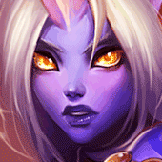 Show All
Show All
 Extreme Threats
Extreme Threats

 Ideal Synergies
Ideal Synergies

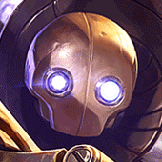

 Synergies
Synergies








 Utopus, and I am a diamond rated support/mid laner on the north america server. I have been playing support frequently, ever since I started playing league back in 2011. Though things have undoubtedly changed since then, I do like to say that I am very comfortable in the role.
Utopus, and I am a diamond rated support/mid laner on the north america server. I have been playing support frequently, ever since I started playing league back in 2011. Though things have undoubtedly changed since then, I do like to say that I am very comfortable in the role.









































 Soraka player will never give her opponents the chance to get damage down on her.
Soraka player will never give her opponents the chance to get damage down on her. Blitzcrank early on misses his
Blitzcrank early on misses his  Rocket Grab, you know that you have a 0% chance of getting hooked for the next 13-15 seconds. Punish him by trying to trade during this time, disengaging well before his
Rocket Grab, you know that you have a 0% chance of getting hooked for the next 13-15 seconds. Punish him by trying to trade during this time, disengaging well before his  Rocket Grab comes off cooldown.
Rocket Grab comes off cooldown. Sivir +
Sivir +  Alistar, then it can be worth it to just stand behind your ADC and heal for him. If your opponents have a high damage lane like
Alistar, then it can be worth it to just stand behind your ADC and heal for him. If your opponents have a high damage lane like  Lucian +
Lucian +  Thresh, you won't be able to keep sustaining the amount of damage that that lane can put out, so it may be worth it to try to run closer to your ADC in an attempt to juggle aggro from your opponents. While you'd be getting focused, the extra couple of free auto attacks that your carry can put out may be enough for him to win the all-in.
Thresh, you won't be able to keep sustaining the amount of damage that that lane can put out, so it may be worth it to try to run closer to your ADC in an attempt to juggle aggro from your opponents. While you'd be getting focused, the extra couple of free auto attacks that your carry can put out may be enough for him to win the all-in. Starcall is most effectively used when
Starcall is most effectively used when















 Answer
Answer




 I'd like to extend my thanks to several people:
I'd like to extend my thanks to several people:







 2,063,828
2,063,828
 95
95











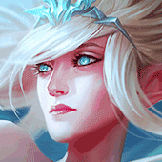
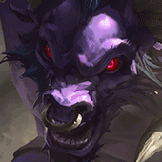
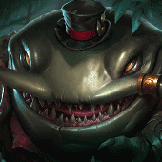
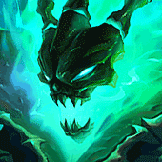

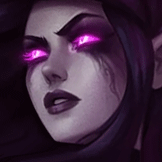
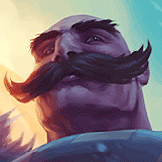
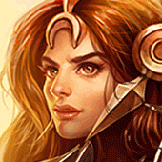
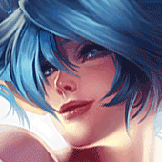
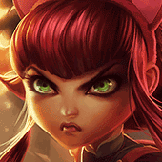
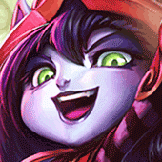
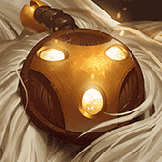
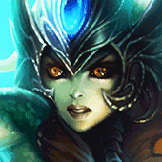
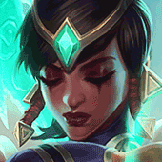
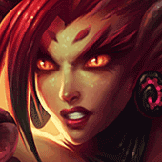










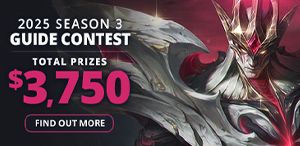

You must be logged in to comment. Please login or register.